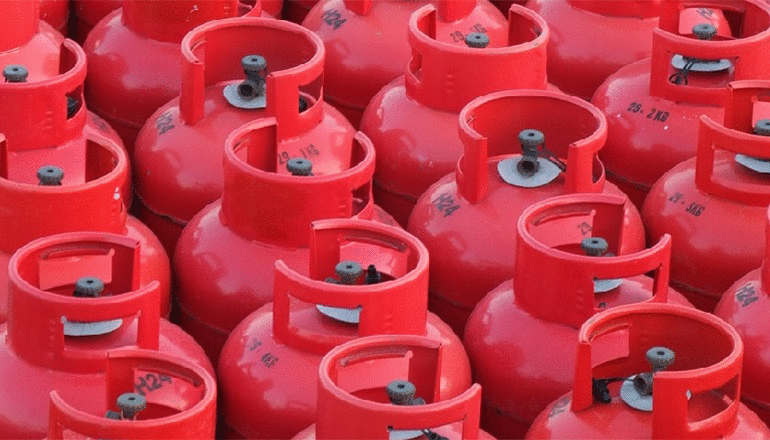
Safe storage of LPG cylinders
The safe storage of Liquefied Petroleum Gas (LPG) cylinders and cartridges is governed by Liquid Gas UK’s Code of Practice 7 (CoP 7). This code provides detailed safety standards for the storage of full and nominally empty containers where the total LPG quantity exceeds 15kg. While the guidance is primarily aimed at larger stores, the same principles may be applied to smaller amounts.
CoP 7 applies to storage at retail outlets, service stations, depots, stockists and other work premises. It also addresses storage and transportation on vehicles and trailers. Gas Safe Register’s Technical Team has reviewed these requirements to emphasise key considerations for engineers and duty holders.
A Dangerous Substance and Explosive Atmosphere Regulations (DSEAR) risk assessment must always be carried out for LPG storage. Outdoor storage is the preferred option, but cylinders may be stored indoors if outdoor provision is not practical. Hazards to consider include:
- Sources of ignition
- Proximity to electrical equipment and cables
- Ventilation
- Combustible materials such as dry leaves, foliage, small bushes or rubbish
- Separation distances from drains, openings and boundaries.
LPG containers must be separated from other hazardous substances including flammable liquids, compressed gases, oxidising, corrosive, toxic and explosive substances.
Quantities above 50kg must be separated by defined distances or protected by a fire wall. Any container that has held LPG should be regarded as full unless new and unused, gas-freed and marked, a dummy container for display purposes, or stored at a filling plant or distribution centre.
Outdoor areas should be graded for drainage, ventilated and free from obstruction. Compounds should be fenced to at least 1.8m and secured against tampering. Multiple exits are required unless the escape distance is under 12m, in which case a single outward-opening, non-locking gate is acceptable.
Weather protection canopies must be lightweight, non-combustible, and supporting structure shall be fire resistant to at least 30 minutes and have adequate space between the top of the containers and the underside of the canopy to allow for water to be applied for cooling in the event of a fire. Where the canopy exceeds 10m x 10m, fixed monitors or a sprinkler system shall be installed.
For temporary or retail sites storing up to 400kg, a lockable open-air wire cage may be used provided minimum separation distances are required.
Cylinders should not be stored on enclosed vehicles or trailers except where they propel the vehicle or are connected to appliances. Small load exemptions apply up to 333kg during transport. Flatbed vehicles and trailers may be used for static storage if open-air storage and separation requirements are observed.
Up to 400kg may be stored in open air on rooftops subject to a risk assessment that covers:
- Delivery vehicle access
- Access for general cylinder movements
- A safe system of work for movement of containers between levels
- Incident management requirements.
Roofs must be non-combustible, level, ventilated, structurally capable of load bearing and provide 60 minutes fire resistance.
Separation distances for rooftop storage are specified as 3m from boundaries, openings into buildings, edges of the roof, drains, vents and sources of ignition and 5m for mechanical ventilation system intakes, outlets from chimneys, flues, etc. Cylinders must be secured to prevent dislodgement and storage areas clearly marked.
Indoor storage of cylinders and cartridges is subject to the specific requirements:
- Specially designed single-storey building
- Specially designed place within a building
- A cabinet or cupboard (limited quantities depending on storage location)
- Limited quantities for display and storage in retail environments.
No part of an indoor store may be below ground level and drains, or floor openings are prohibited. Only dummy or gas-free containers may be used for permanent display, and no storage is permitted in stairways, near exits or in escape routes.
All gas cylinder storage areas shall be subject to a fire safety risk assessment. A fire safety management plan must determine the equipment necessary for storage areas and outline procedures in the event of a fire or gas escape.
Adequate training and instruction should be given appropriate to the responsibility of the persons on site. Consideration must be given to the location, type and number of fire extinguishers and the availability of water sources such as fixed sprays and sprinkler systems, depending on the number of containers stored.
LPG storage requires strict compliance with CoP 7 to mitigate the risks of fire and explosion. Whether cylinders are stored outdoors, indoors, on rooftops or on vehicles, engineers must ensure correct siting, separation, ventilation and fire precautions. A robust risk assessment, supported by an effective fire safety management plan and staff training, is essential for all premises handling LPG.